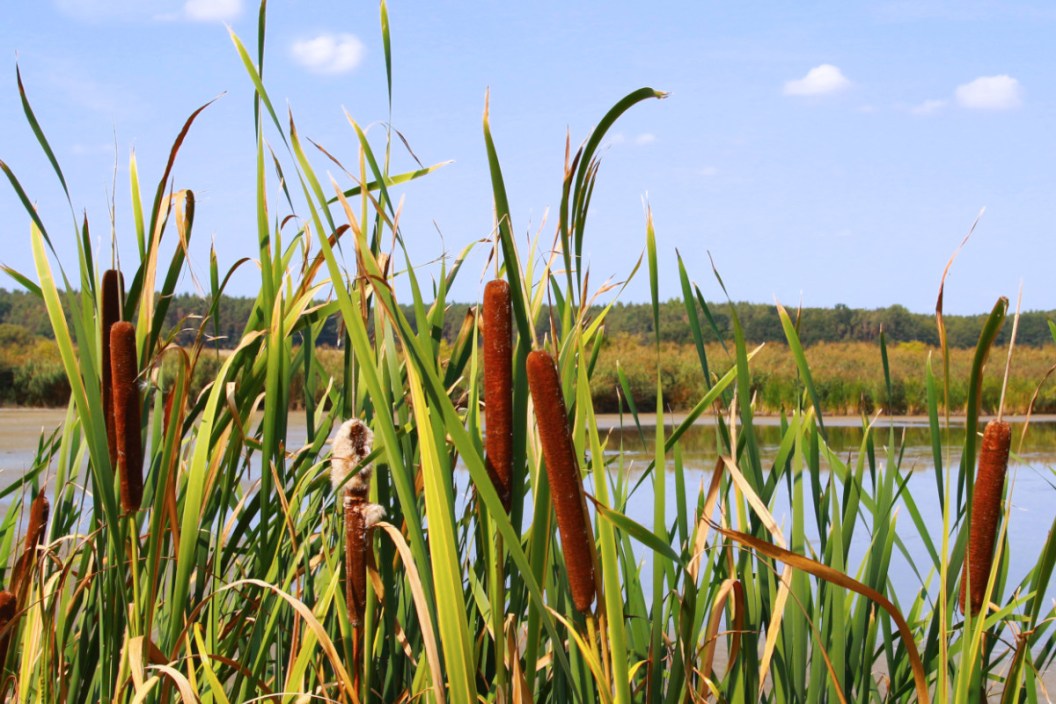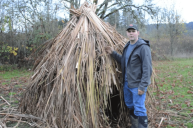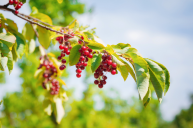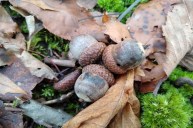Cattails are probably the most easily recognized and known aquatic plant to any outdoorsman who spends time near water. Although many of us do not give them much of a second glance on most days. They like to grow in large groups in shallow water or slow-moving waters exposed to sunlight. They grow to about five feet tall with long sword-like leaves. The seed head grows near the top of the stock and is green to brown with a yellow pollen spike on top. Most people at least have a passing familiarity with these plants if they've spent any amount of time in and around the water. However, many don't realize the many uses of this edible plant in a survival situation. With that, let's look at the plethora of ways to utilize every part of one.
Are cattails edible?

Getty Images: raksybH
The cattail is completely edible year-round. Different parts are best harvested at different times of the year. They can be cooked, pickled, eaten raw in salads or by themselves, and turned into flour. During spring when the seed head is green, it can be boiled up to be eaten like corn on the cob. I tried this earlier this year and let me tell you, it doesn't taste like corn. It has a taste that is all its own. When the seed heads turn brown, they are no longer good to eat.
The younger shoots shorter than 24 inches can be harvested and prepared like asparagus. Just grab them and pull straight out of the ground before breaking apart the outer leaf layers to reveal the white inner cores. Boil them up or eat them raw. Just know that cattails harvested via the pull method will not regrow the following years. So, it's important to realize that, if you're in a survival situation and need help now, these methods are fine. If you're trying to maintain sustainable crops of cattails, then cut the shoots below the water and leave the bulbs/root system intact to keep growing.
An alternative method of harvesting involves feeling along the base of the plant for the two sides of the bulb/root structure, and only cut off one side to allow the other bulb to keep growing. While these methods aren't as direct or as quick as pulling or digging the entire plant, they'll leave the roots to keep growing.
In early summer the seed heads produce small flowering spikes, one on each plant, on the top. The flower heads are covered in yellow pollen. Cattail pollen is very high in protein, but very hard to collect. You must carefully drape a bag over the head and snap it off. Then gently shake the pollen out into the bag. Just remember the slightest breeze will blow it all away so be patient and careful. Sift the pollen into a container and it is ready to use. In late fall, throughout winter, the root stocks become filled with lots of starches. Dig them up and boil them like potatoes. They can also be ground down into a powder for a great white flour for making flat breads or thickening stews.
Other Uses for the Common Cattail
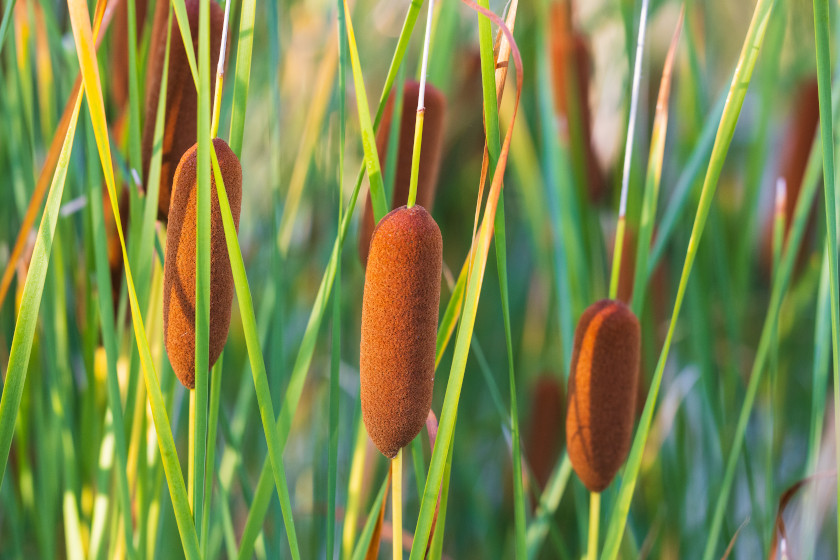
Getty Images: Janis Janums
The dried leaves from cattails make for great lightweight cordage. It won't be heavy duty to the point you can move large logs or a game animal. However, it can be lashed together to makeshift weapons or other light use items. They make for excellent clothing repairs. Carefully collect whole cattail leaves off the wetland plants while you are foraging the edible part of the plants. Set them out flat in the sun, or carefully hang them from a tree. After a few days they should be dry enough to begin the cordage-making process. I use the reverse wrap method with an entire leaf to make my cordage from them.
The heads of a cattail can also be a great fire tinder at certain times of the year. When the heads turn brown, their fluffy seed insides will catch flame easily. Just break them off the plant and break them open. Carefully pull out the cottony insides to use for great tinder. Do not light the tinder until you're ready with other fire-making supplies. Simply because the fluff burns up extremely quick. I find it is best added to a fire nest to just help ignite it and not a stand-alone bundle.
If you are ever lost and happen to stumble upon them, I would stay put and take advantage of all the resources this plant provides while waiting for help. It helps cover at least two basics of food and fire. And since cattails usually grow near water, you will likely have the most important resource readily at hand. We have never been able to look at the simple cattail the same way ever again after learning of the multitude of versatile uses for this plant.
